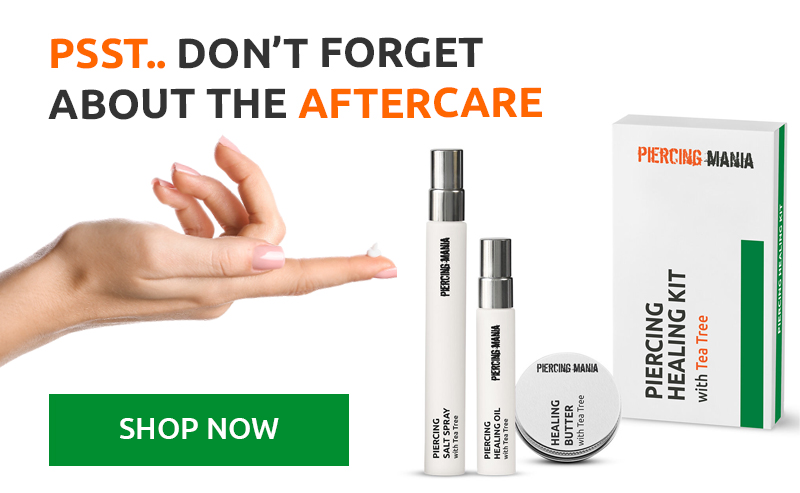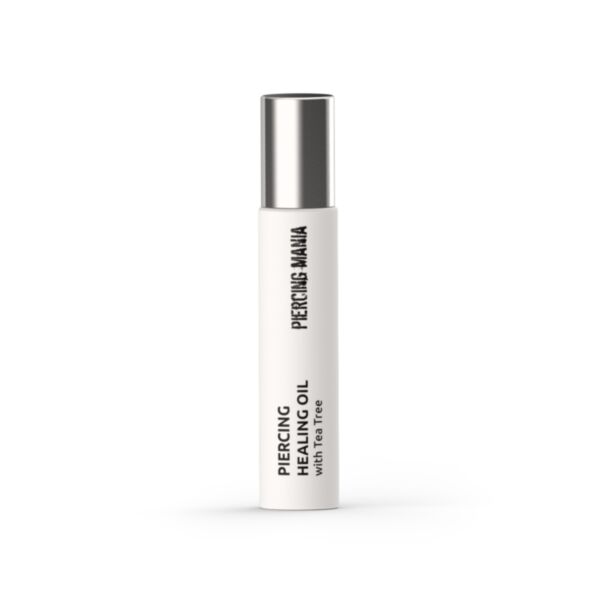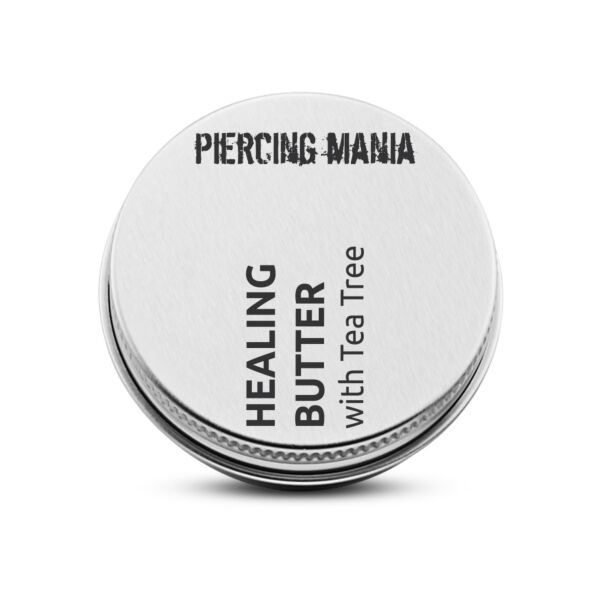Sea, Sand, Sunshine and Piercings
Whether you are about to go on a well-deserved holiday or you want to visit a local beach, doing so with a piercing may require some preparations. In this article we look at the effects of ocean waves, sandy beaches and lots of sunlight on fresh and healed piercings.
If you are only after some specific information, use the 'Jump To' section to quickly get what you need.
Jump to:
Is it safe to swim in the sea with Piercings?
Swimming in the sea is not a risk for healed piercings. Even better, the salty water has a cleansing effect similar to a salt bath you would take at home. With fresh piercings, it's a different case. It is best to avoid all moist places, so swimming is definitely not recommended. It varies per piercing how long the healing process takes, but it is generally best to stay away from water for at least the first eight weeks. If your piercing is healing nicely and you don't experience any inflammations or worse, you may want to take your chances and dive into those waves.
After swimming, rinse your piercing with fresh water. Sea water may contain dirt and other things you don't want clinging around your piercing. Rinsing also helps to avoid white stains caused by salt residue once you have dried up.

Is my Piercing Jewelry able to stand the salt water?
Piercings come in many different materials and often with a plating or finish. Saltwater or water in general may harm your piercing, causing rust or tarnishment. When you wear a titanium jewel, there is nothing to worry about, and the same applies when your piercing is 100% made of 316L Surgical Steel. However, be careful wearing piercing jewelry with a gold plating, with added brass or made of Sterling Silver. These materials and platings cannot stand the effects of a day at the beach.
It is best to leave your piercing jewelry made of organic materials at home when you go swimming in the sea. Jewelry made of wood, horn and bone don't do well under the circumstances. When you buy your piercing jewelry at Piercing Mania, you can find more details about materials and platings used on the product page. You can also contact our customer service to check if your previously purchased jewelry is fit for a day on the beach.

What are the effects of sand to my piercing?
The effects of sand are a different subject compared to salt water. Sand affects both your piercing and your jewelry. Although it may differ from beach to beach, the sand is most likely contaminated with dirt and other stuff. Having this adhering around your piercing may be a recipe for problems later in the week. Try to avoid sand accumulating directly around your piercing. Gently dry your piercing and the surrounding skin when you return to the beach after a swim to prevent sand from sticking onto those areas. Is your piercing still fresh, avoid sand around your new piercing at all times.
Another effect of sand is that it has a sanding effect on your piercing jewelry. This may not be harmful to titanium piercings, as this is an extremely hard metal, but softer materials like gold and silver are likely to get damaged. It is safe to say that we recommend leaving your expensive 14 karat gold piercings at home when you visit the beach.
When looking at plated jewelry, the sanding effects are even more destructive. Jewelry's plating is so thin that a day at the beach can quickly fade away the layer around your jewel. Certain plating techniques, like PVD plating, may be less subjective to the effects of sand but still consider leaving these as home as well.
Day at the Beach Checklist
Wear jewelry of the right material
Avoid sand on and around your piercing
No lotion on your piercing jewelry
Is a day of sun bad for my piercing?
A day bathing in the sun can cause some problems. You don't have to worry just yet, but let's consider the most important effects. Using sunblock is always recommended; however, be careful that you don't apply this on the jewelry. The contents of sun lotion can seriously harm any plating or materials like sterling silver or brass. You also want to keep the cream away from your freshly pierced skin.
UV in the sunlight is not harmful to most jewelry made of metals. However, Sterling Silver can tarnish due to the effects of too much direct sunlight. Jewelry made of wood is subjective to the sun, as the wood may dry out quickly. Organic materials like horns and bone don't do well with sun exposure.
If you want to learn more about the various materials used for piercings and earrings, read our material guides for an in-depth look at your piercing's material.
Piercing Aftercare after a day on the beach
After a day at the beach, it's wise to give your piercing some attention. Especially with piercings not fully healed yet, proper aftercare after such a day is essential.
Make sure to take a shower and wash off all remaining sand and other remains of the beach, ocean and sunblock. Adequately rinse your piercing so no residue is left.
Gently dry your piercing and apply some Piercing Healing Oil or Healing Butter on your fresh or healed piercings. Piercing Balm or Piercing Wonder Oil are also fine for fully healed piercings. This helps to keep your skin moisturized and fights any bacteria that may have been nested. Avoid any aftersun lotion getting on your piercing jewelry, unless it is made of 100% titanium.
Want to read more interesting piercing articles?
If you enjoyed this read and want to keep reading, we have more helpful or exciting piercing articles available. Discover all the piercing articles through the button below.
























